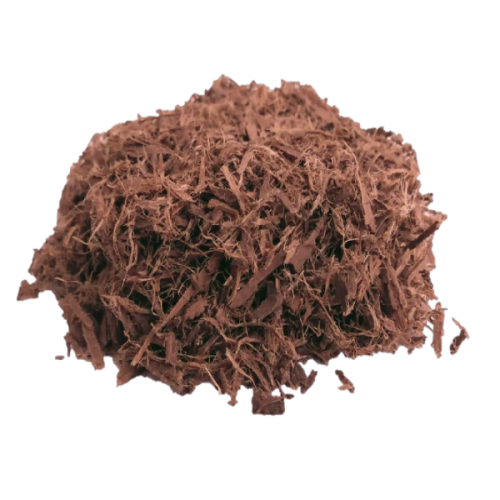Mimosa Hostilis Root Bark holds a big spot in classic procedures and modern-day botanical purposes. This text explores the traits, origins, and common queries bordering this remarkable plant product, with a selected concentrate on the prized Brazillian Mimosa Hostilis Root Barks.
What's Mimosa Hostilis Root Bark?
Mimosa Hostilis, scientifically referred to as Mimosa tenuiflora, is usually a perennial tree native to your northeastern region of Brazil and portions of Mexico. The basis bark of the tree is made use of for centuries by indigenous communities for a variety of functional and regular uses. The internal root bark incorporates notable concentrations of tannins, alkaloids, together with other phytochemicals that add to its distinctive Qualities and programs.
The tree itself is remarkably resilient, effective at surviving in inadequate soils and drought situations. This hardiness contributes to the robust mother nature of the bark and its chemical profile. When harvested sustainably, the outer root bark is cautiously separated to obtain the valuable internal bark, that's then dried and ready for use.
Brazilian Mimosa Hostilis Root Bark: The Gold Common
When talking about high quality in Mimosa Hostilis merchandise, the Brazillian Mimosa Hostilis Root Barks are frequently thought of outstanding in the botanical current market. A number of factors lead to this name:
Optimal Rising Disorders
The particular soil composition, weather, and ecosystem of Brazil's northeastern area produce best situations for Mimosa tenuiflora to develop its entire chemical prospective. The mineral-rich soils and individual sample of rainfall and daylight in this space seem to improve the concentration of Energetic compounds in the foundation bark.Traditional Harvesting Understanding
In locations the place Mimosa Hostilis has been utilised typically, harvesters have created advanced solutions for sustainable harvesting that preserves both equally the tree as well as potency from the bark. This information, passed down through generations, makes sure that the bark is collected at the right time of 12 months and processed employing approaches that retain its integrity.Distinct Actual physical Properties
Brazilian Mimosa Hostilis Root Bark generally displays a rich reddish-brown to purple internal bark having a fibrous, dense texture. The Visible attributes normally function an initial indicator of good quality, with expert buyers recognizing the exclusive appearance of bark from this area.
Typical Apps and Uses
The purposes of Mimosa Hostilis Root Bark span both of those common and fashionable contexts, however It can be essential to be familiar with the authorized standing of those works by using varies by country and jurisdiction.
Traditional Craft and Follow
Indigenous communities have historically utilized Mimosa Hostilis Root Bark for making pure dyes for textiles, with the bark developing stunning shades of purple, burgundy, and deep brown. The tannin-wealthy Houses also designed it useful for leather tanning along with other functional purposes.Present day Botanical Research
Up to date interest in Mimosa Hostilis Root Bark extends to varied fields of botanical investigation, specially learning its chemical composition and prospective apps. Researchers have identified a number of attention-grabbing compounds inside the bark that warrant even further scientific investigation.Horticultural and Agricultural Takes advantage of
In permaculture and sustainable agriculture, Mimosa tenuiflora is valued like a nitrogen-fixing species that could improve soil high-quality. The bark by itself, when processed, may be used as being a organic mulch or soil Modification in specific agricultural contexts.Quality Evaluation and Identification

For anyone working with Mimosa Hostilis Root Bark, understanding how to evaluate high quality is critical. Superior-good quality product, notably authentic Brazillian Mimosa Hostilis Root Barks, generally displays specified qualities:
The Visible physical appearance should really show a transparent distinction in between the outer and interior bark, Along with the inner bark displaying deep, vivid colors. The fabric must have a attribute earthy, a little bit sweet aroma, cost-free from musty or moldy notes. When processed, the bark should yield a good powder whilst sustaining its fibrous construction until grinding. Correctly dried bark really should be brittle although not dusty, indicating accurate moisture material.
Regularly Questioned Queries (FAQs)
one. What's the distinction between Mimosa Hostilis Root Bark from Brazil along with other areas?
Brazilian Mimosa Hostilis Root Bark is generally deemed exceptional because of the optimum growing circumstances in northeastern Brazil, which result in increased concentrations of active compounds. The normal harvesting methods used In this particular area also lead to the overall high quality and potency of the final merchandise.2. How should I retail store Mimosa Hostilis Root Bark to take care of its excellent?
Store the bark inside Brazillian Mimosa Hostilis Root Barks of a interesting, darkish, and dry position within an airtight container. Defense from mild, humidity, and extreme temperature fluctuations should help preserve the bark's chemical integrity and prevent degradation of its active factors.three. Is Mimosa Hostilis an endangered species?
No, Mimosa tenuiflora is not presently outlined being an endangered species. The truth is, it's noted for its resilient expansion and skill to thrive in complicated circumstances. Having said that, accountable harvesting techniques remain important to make sure the sustainability of wild populations.four. Can I develop Mimosa Hostilis outside of its native habitat?
Although Mimosa tenuiflora thrives ideal in its native tropical local weather, it could be cultivated in comparable environments. The tree calls for nicely-drained soil, loads of sunlight, and protection from frost. Even so, the chemical profile of cultivated specimens may possibly vary from wild-harvested Brazilian product.5. Exactly what is the authorized position of Mimosa Hostilis Root Bark?
The authorized standing differs significantly by state and jurisdiction. In certain locations, the Uncooked bark is lawful to have, while in Other individuals, specific extracts or preparations can be controlled. Generally research and comply with regional legal guidelines and regulations in advance of buying or working with any botanical substance.Comprehension Mimosa Hostilis Root Bark, specifically the premium Brazillian Mimosa Hostilis Root Barks, requires appreciation of its botanical traits, regular context, and ideal programs. No matter whether for research, craftsmanship, or botanical study, this amazing plant material proceeds to be a topic of fascination across various fields, however normally within appropriate legal and moral boundaries.